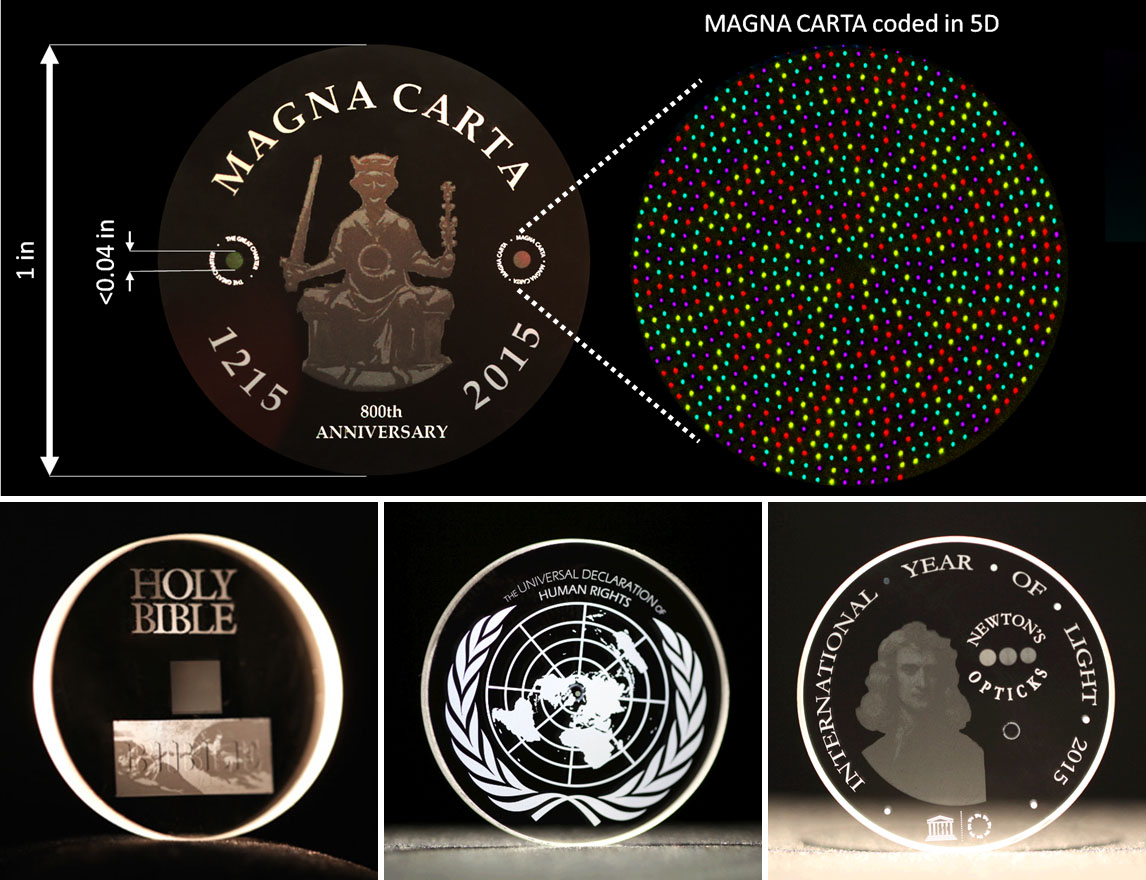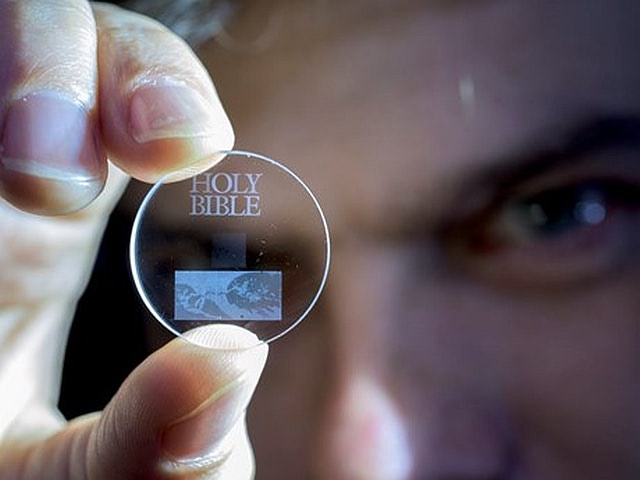Researchers at the University of Southampton have discovered a way to store data in five dimensions on a nano structured glass able to survive for billion of years. Their first experiment with this technique dates back to 2013, when they successfully managed to record a 300 KB copy of a text file in 5D. However this time this high density, immutable storage is capable of storing up to 36 TB of data and will last (almost) forever.
Nowadays we use disks to store data, but they are quite perishable and often need replacement. CDs and DVDs have an average life expectancy of a decade and hard drives have an eventual 100% dificiency estimate. Using a nano structured glass, scientists from the University's Optoelectronic Research Centre (ORC) have developed the recording and regeneration process if 5D digital data by femtosecond laser writing. This disk has a thermal stability up to 1000°C and essentially unconditional life span at room temperature (13.8 billion years at 190°C) opening a complete new era for archiving.
The writing/recording process is called femtoprinting. Employing a femtosecond laser — a laser that can deliver pulses that are just a few quadrillionths of a second long — nano-structures inside a monolithic sample of glass can be altered into polarization converters. These polarizing formations are invariable until they are re-written with the same method. Light is simply shone through the piece of glass to read the documents. The small polarizers bend the rays of light, and both the type and direction of polarization can then be measured and converted into digital data.

Museums, libraries and National archives are only examples of organization that could benefit from this technology. It would result to be revolutionary for any institution with big archives. As for today major documents from human history, such as the Universal Declaration of Human Rights (UDHR), the Magna Carta and the Kings James Bible, have been saved in this way, fulfilling the eternal human desire to leave an everlasting mark of our existence on Earth.
Peter Kazansky is a Professor at the ORC who participated in the making of the so-called "superman memory crystal", and he is enthusiastic about the results: “It is thrilling to think that we have created the technology to preserve documents and information and store it in space for future generations. This technology can secure the last evidence of our civilisation: all we’ve learnt will not be forgotten”.
Source: University of Southampton

Share your thoughts and join the technology debate!
Be the first to comment